Welcome to the captivating world of tulip coloring pages, where the beauty of nature converges with the joy of artistic expression. Tulips, with their vibrant colors and graceful forms, have long held a special place in the hearts of garden enthusiasts & art lovers alike. In this article, we invite you to immerse yourself in the therapeutic art of coloring as we also explore the educational universe of tulips.
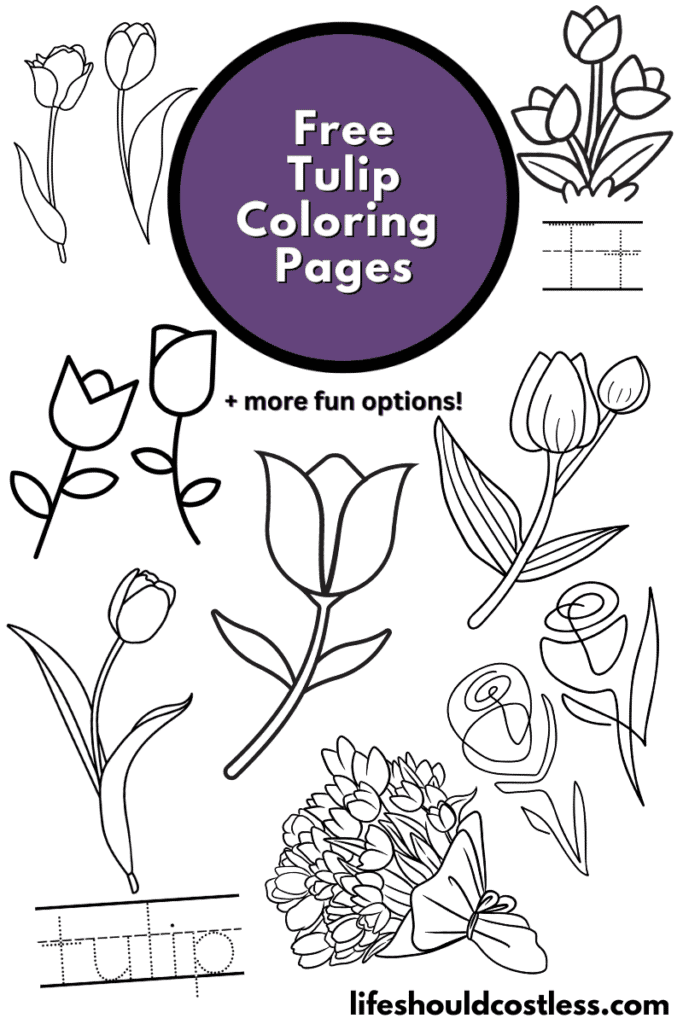
So, grab your favorite coloring tools and prepare to embark on a colorful adventure through the mesmerizing beauty of tulips.
Feel free to choose any design that appeals to you, download the PDF template for free, print it, and enjoy coloring to your heart’s desire.
Alternatively, you can utilize them as embroidery patterns or draw inspiration for creating intricate line tattoos.
Tulip facts
For those who are new to my coloring pages, it’s worth mentioning that I enjoy providing the opportunity to delve into the subject matter, allowing you to seamlessly transform it into an educational experience.
So, let’s dive right in and embark on this enriching journey together!
Here are several fun and interesting, simplified, facts about tulips (my reference source can be found here):
- Origin and Cultural Significance: Tulips are native to regions spanning from Southern Europe to Central Asia, and they have a rich cultural significance, particularly in the Netherlands.
- Symbol of Holland: Tulips are often associated with the Netherlands and are regarded as a national symbol, representing Dutch history, art, and heritage.
- Historical Tulip Mania: In the 17th century, tulips caused a speculative frenzy known as “Tulip Mania,” during which tulip bulbs became incredibly valuable commodities and resulted in an economic bubble.
- Wide Variety of Colors: Tulips come in a vast array of colors, including red, pink, yellow, white, purple, and even multi-colored varieties. This diversity adds to their allure and makes them a popular choice for gardens and floral arrangements.
- Distinctive Shape: The iconic shape of a tulip flower consists of three petals and three sepals, collectively known as tepals. The tepals can display different patterns and markings, adding to the visual appeal of tulips.
- Perennial Flowers: Tulips are perennial plants, meaning they bloom year after year when given proper care. They typically go through a dormant phase during winter and reemerge in spring with vibrant blooms.
- Longevity of Blooms: Depending on the variety, tulip flowers can last from a few days to a couple of weeks. However, their beauty can be extended by removing the pollen-bearing anthers, which promotes longevity.
- Tulip Festivals: Various countries around the world, including the Netherlands, the United States, and Canada, celebrate tulips with grand festivals, showcasing breathtaking displays of tulip varieties in full bloom.
- Medicinal Uses: In traditional medicine, tulips were believed to possess healing properties and were used to treat various ailments such as headaches, stomach problems, and even as a diuretic.
- Famous Tulip Gardens: Keukenhof Gardens in the Netherlands, also known as the Garden of Europe, is renowned for its stunning displays of tulips and attracts millions of visitors each year.
- Tulips in Art: Tulips have been a popular subject in various forms of art, including paintings, ceramics, and textiles. Artists like Vincent van Gogh and Claude Monet famously depicted tulips in their works.
- Hybridization and Tulip Breeding: Tulips are known for their hybridization, leading to the creation of countless cultivars and unique variations. Tulip breeding has become a dedicated field, resulting in new color combinations, shapes, and sizes.
- International Tulip Day: The third Saturday in January is celebrated as International Tulip Day, where Amsterdam’s Dam Square is transformed into a vibrant tulip garden, allowing visitors to pick their own tulips for free.
- Edible Tulip Bulbs: In some cultures, tulip bulbs have been consumed as a food source during times of scarcity. They can be prepared in various ways, such as boiling, baking, or pickling.
- Tulip Etymology: The name “tulip” is believed to have originated from the Persian word “delband,” meaning turban, which resembles the shape of a tulip flower.
These facts provide just a glimpse into the fascinating world of tulips, showcasing their beauty, historical significance, and cultural impact.
If you would like to continue on your quest for tulip knowledge, here are some other reputable resources to learn about them while coloring:
- https://www.almanac.com/plant/tulips
- https://www.britannica.com/plant/tulip
- https://www.countryliving.com/gardening/a35956/tulip-fun-facts/
- To see all of my free printables, go here.
- To see an alphabetized index of my coloring pages, go here.
- To see all of my botanicals coloring pages, go here.
- To see all of my floral coloring pages, go here.
Coloring tips
Here are my best tips and tricks to help you get the most out of your tulip coloring endeavors:
- Select a Color Palette: Tulips come in a wide range of colors, so consider choosing a color palette that complements your personal preferences or the desired mood of your artwork. By experimenting with different combinations you can bring out the true beauty of the tulips.
- Gradual Color Blending: To add depth and dimension to your tulips, try blending colors gradually. Start with a lighter shade as the base and gradually layer darker shades, blending them softly to create a smooth transition.
- Enhance Petal Details: Tulip petals often have intricate patterns and markings. Take your time to highlight these details using fine lines, gentle shading, or subtle texture techniques. This will give your tulips a more realistic and visually appealing appearance.
- Play with Light and Shadows: Consider the direction of the light source in your artwork. Add shadows to create depth and make the tulips appear more three-dimensional. Lightly shade the areas away from the light source, emphasizing the contours and curves of the petals.
- Experiment with Backgrounds: The choice of background can significantly impact the overall composition. Consider contrasting colors or patterns that make the tulips pop. Alternatively, a simple, solid-colored background can provide a clean and elegant look.
- Explore Various Coloring Techniques: Don’t be afraid to explore different coloring techniques, such as layering, stippling, cross-hatching, or blending with colored pencils, markers, or watercolors. Each technique can produce unique effects and textures, allowing you to experiment and find your preferred style.
- Reference Real Tulips: Observing real tulips or referring to high-quality photographs can provide valuable insights into the natural colors and details of tulip petals. Use these references as a guide to achieve greater accuracy and authenticity in your coloring.
- Add Additional Elements: Consider adding complementary elements like leaves, stems, or a garden setting to complete the composition. These elements can provide context and make your tulip coloring more visually interesting.
- Explore Different Tulip Varieties: Tulips come in various shapes and sizes. Have fun experimenting with different tulip varieties and their unique characteristics. This allows you to showcase a diverse range of tulip designs and expand your coloring skills.
- Practice and Enjoy the Process: Coloring tulips is a creative endeavor, so embrace the process and enjoy the experience. Practice regularly to refine your techniques, try new approaches, and develop your personal style. Remember, coloring is meant to be relaxing and enjoyable, so have fun expressing yourself through your tulip artwork.
By incorporating these tips and tricks into your coloring process, you’ll be able to bring the beauty of tulips to life and create stunning and captivating artwork.
Happy coloring!
Options For Printing:
Letter T is for tulip writing practice worksheets
*My letter T is for tulip coloring sheet printables are specifically designed to be used in a classroom setting, they are the only printable options on this page that do not need written permission to use in a public setting.
Please send the link to this post along if anyone asks you where you got them. Thank you!

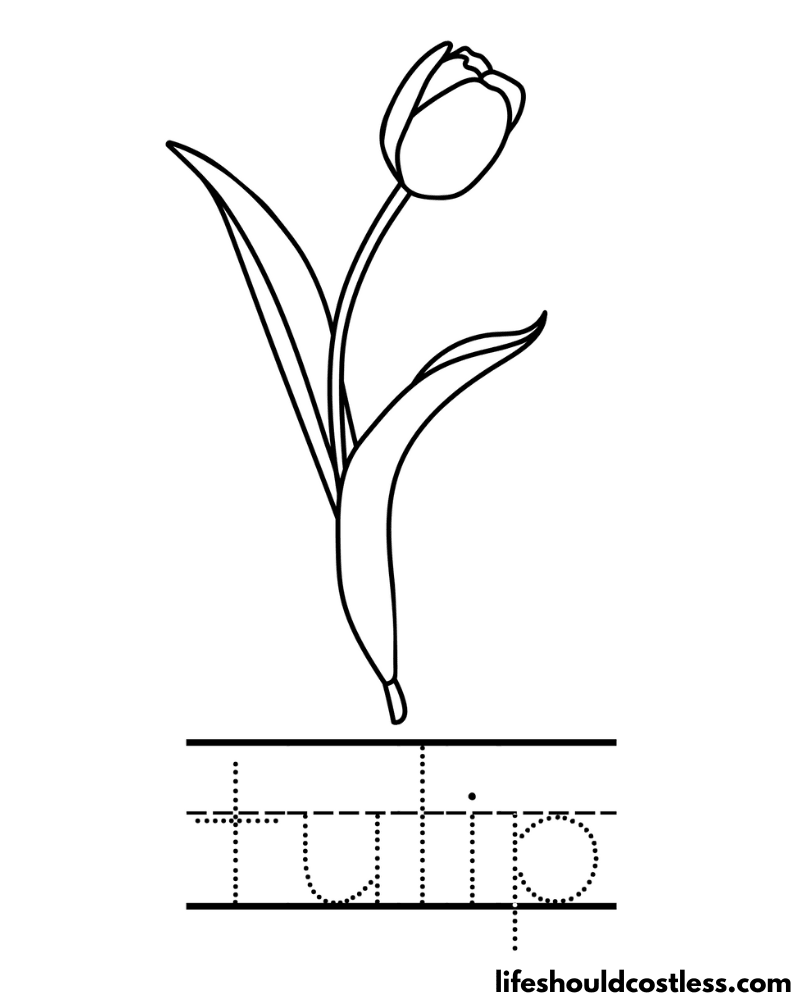
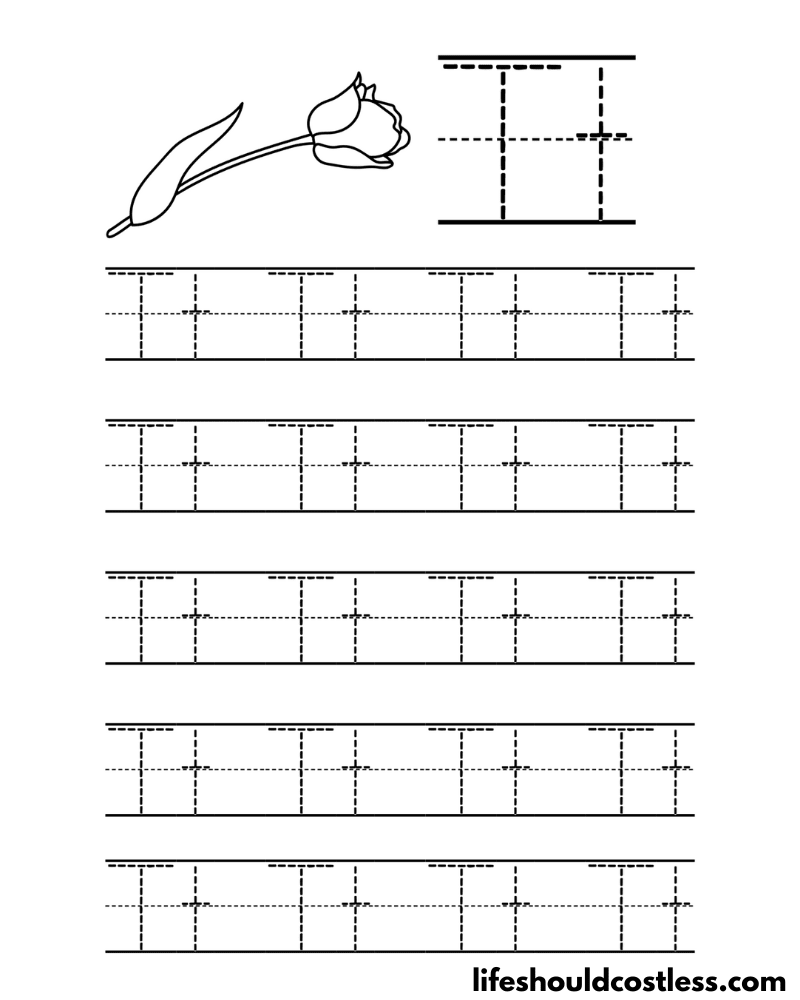
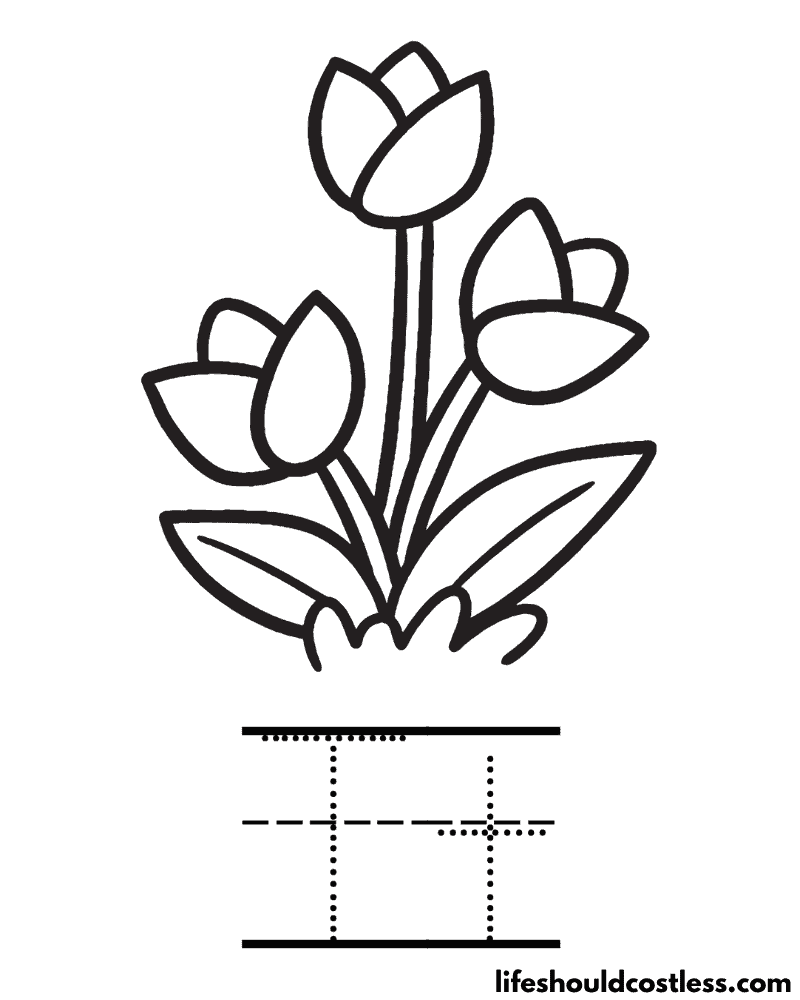
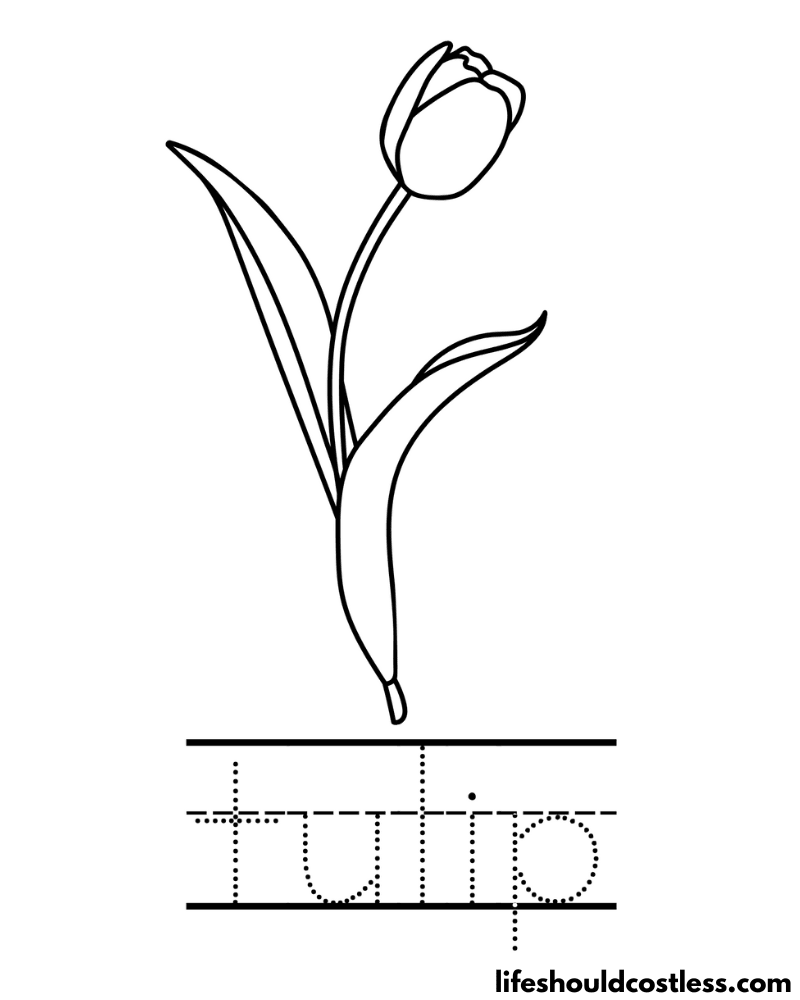
Various Other Tulips To Print

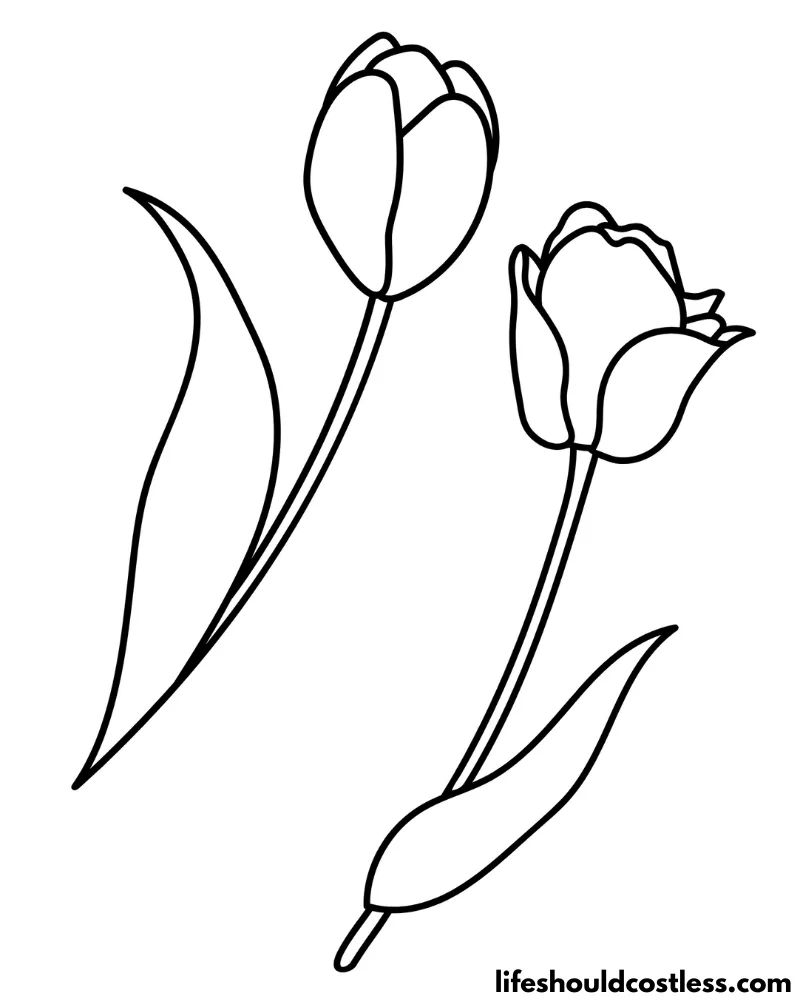
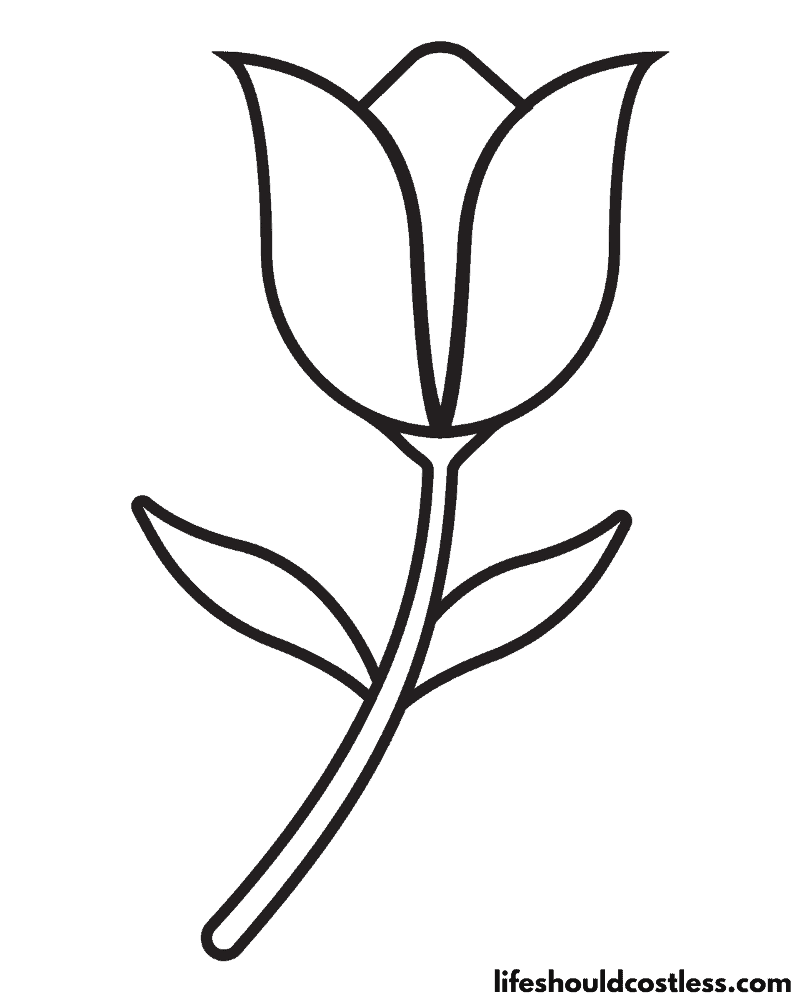
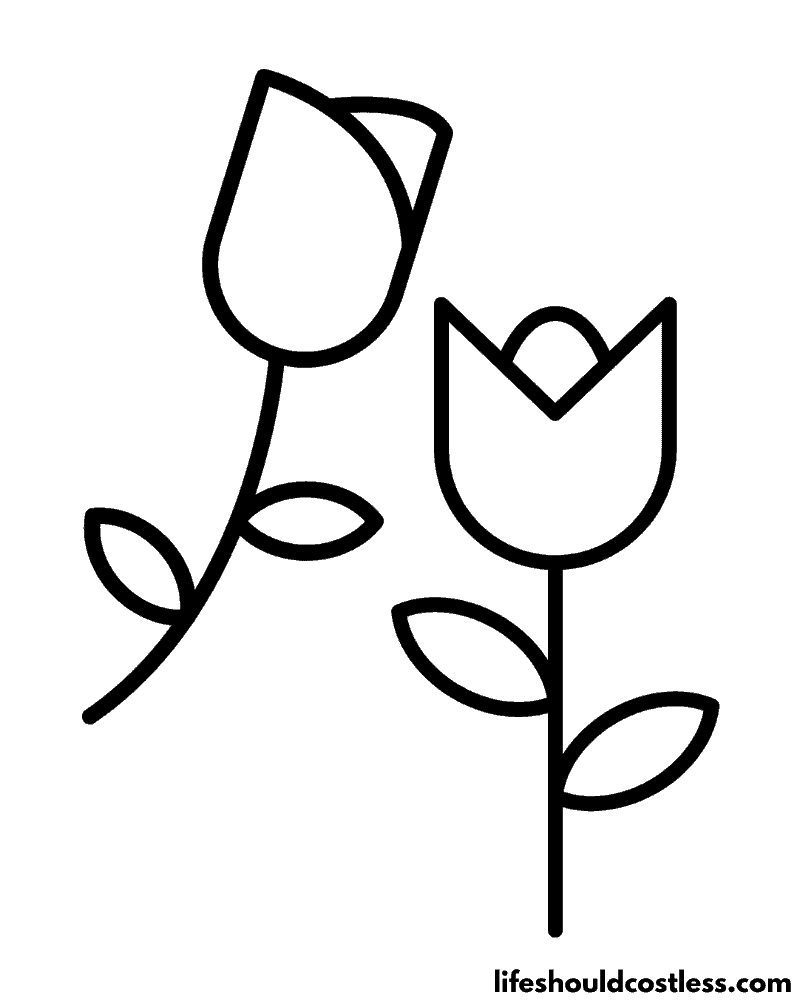
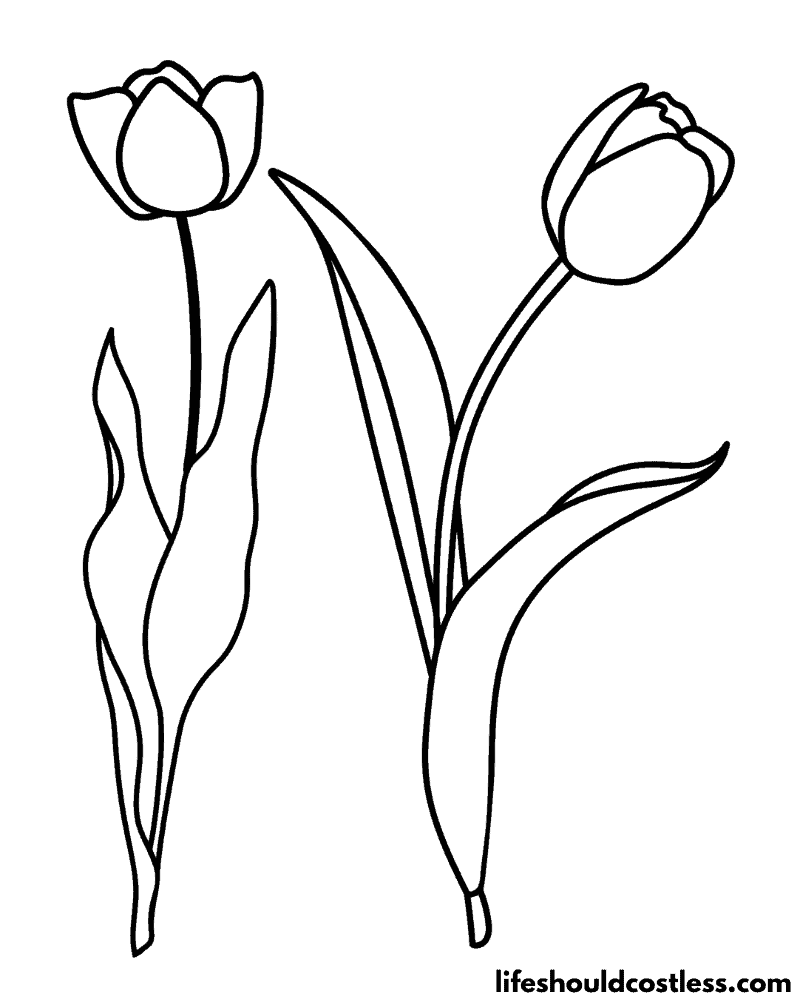
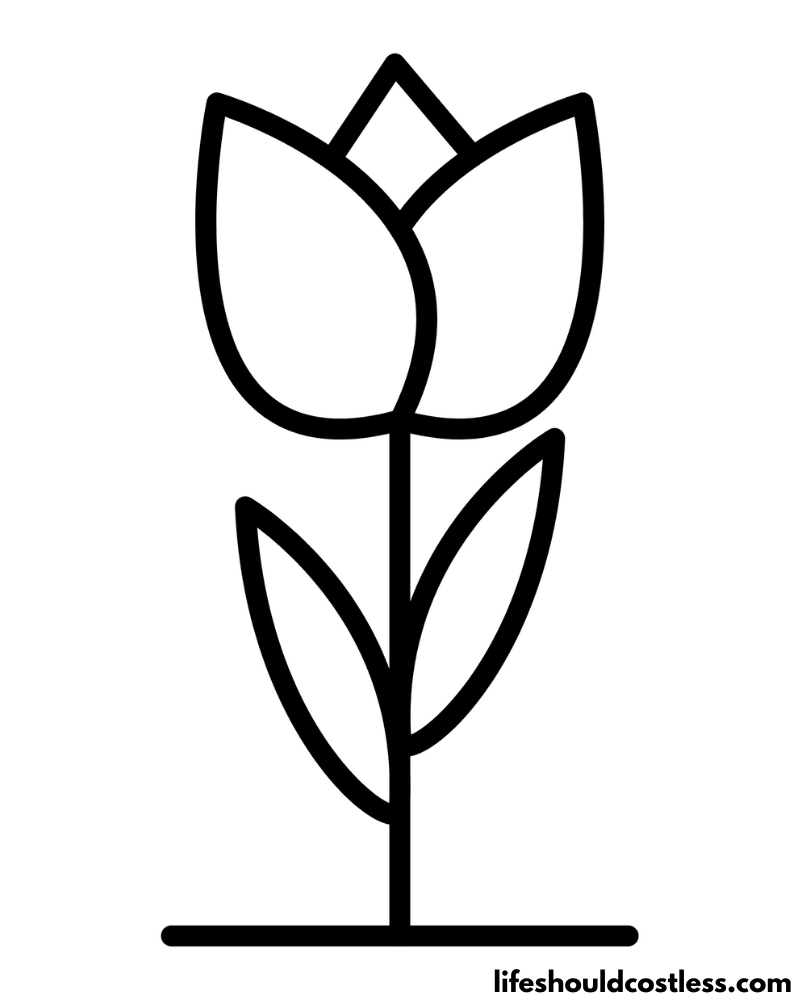
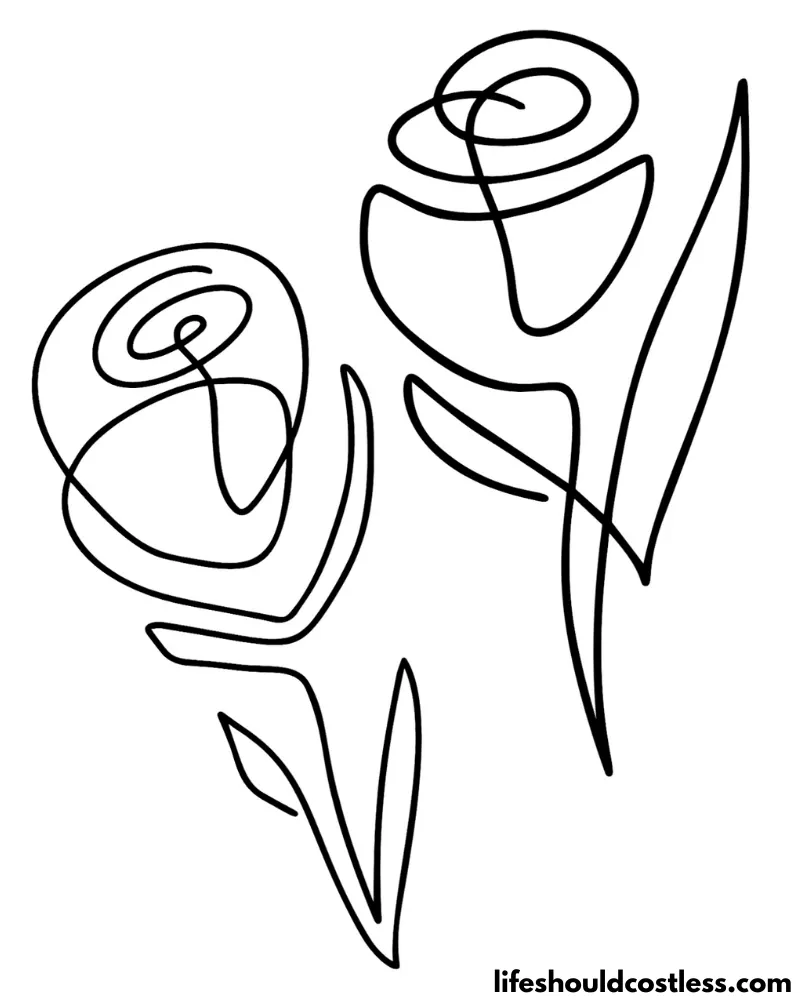
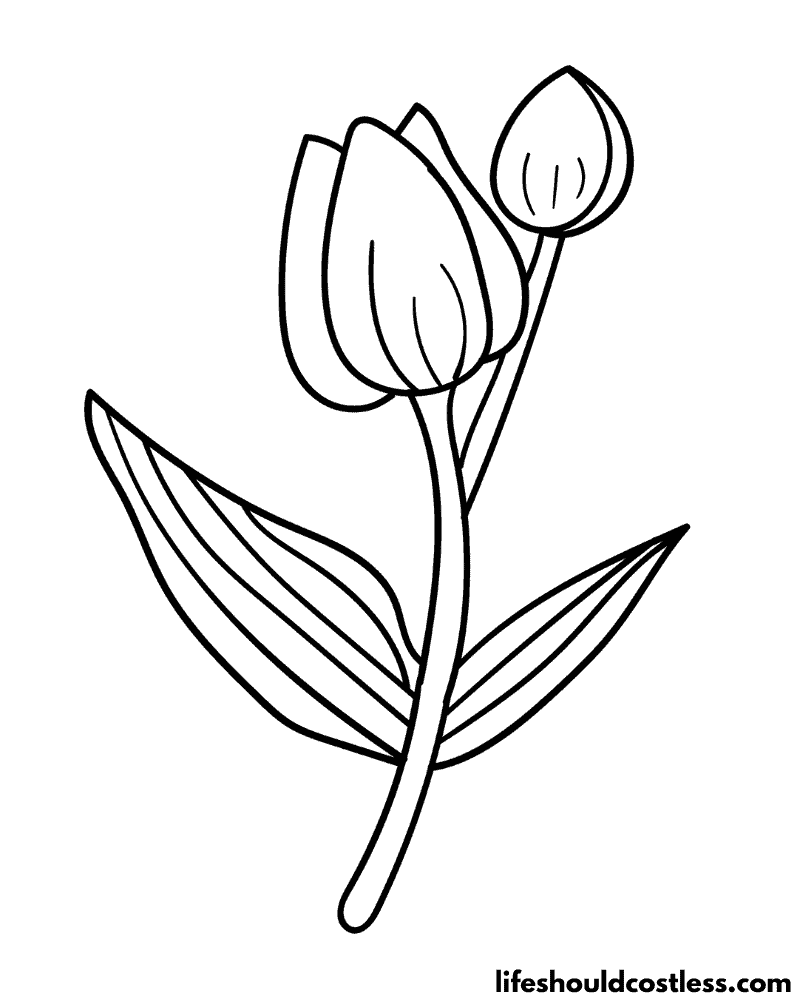
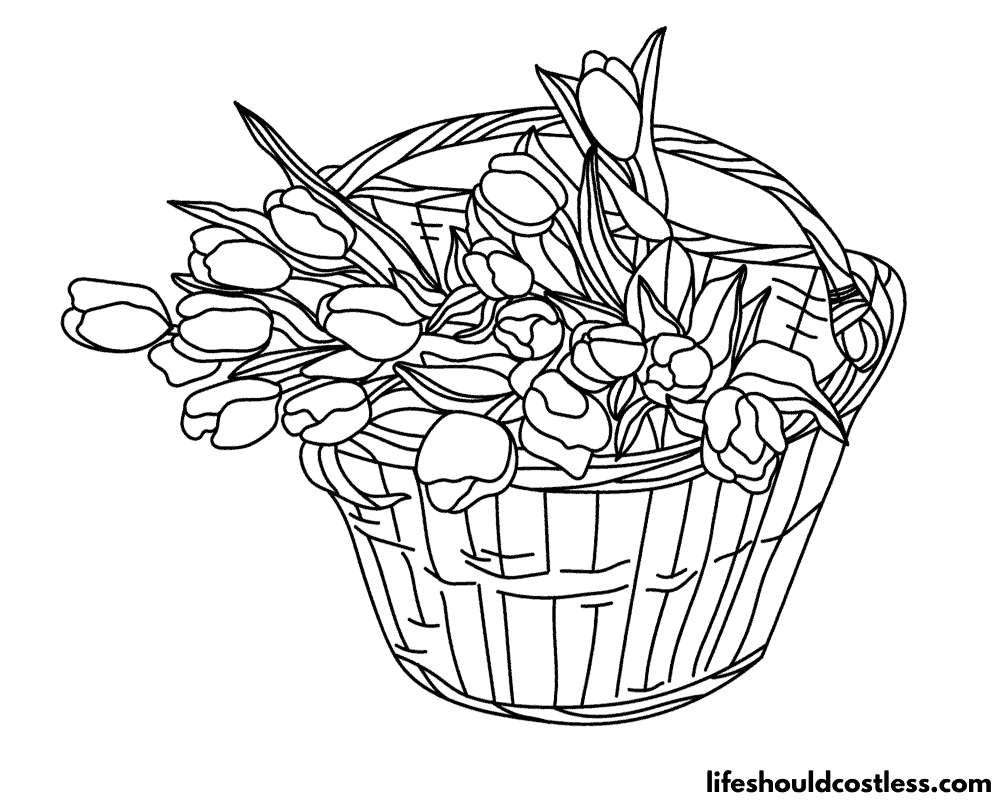
FAQ’s
Tulips come in a wide variety of colors, providing a vast range of options for coloring. Some common colors of tulips include:
Red: Classic red tulips are vibrant and eye-catching, symbolizing love and passion.
Pink: Pink tulips can range from light pastel shades to deeper, richer hues. They often represent affection, happiness, and femininity.
Yellow: Yellow tulips convey warmth, joy, and friendship. They can range from soft, pale yellows to vibrant, sunny shades.
White: White tulips represent purity, innocence, and elegance. They can create a serene and sophisticated look in coloring pages.
Purple: Purple tulips exude a sense of royalty, luxury, and spirituality. They range from soft lavender tones to deep, rich purples.
Orange: Orange tulips are vibrant and energetic, symbolizing enthusiasm and creativity. They can range from bright orange to tangerine shades.
Bi-colored: Tulips can also have combinations of two or more colors, creating stunning bi-colored blooms. For example, a tulip may have red and yellow, purple and white, or pink and white combinations.
Multi-colored: Some tulips feature a variety of colors on a single flower, creating a striking display of multiple hues. These multi-colored tulips can be found in various combinations and patterns.
It’s worth noting that tulip cultivars have been bred to exhibit an extensive range of colors and patterns, allowing for even more creative possibilities when coloring tulip pictures.
Feel free to experiment with different color combinations and create your own unique interpretations of tulip hues.
The rarest tulip color is generally considered to be black. While true black tulips don’t exist naturally, there are tulip cultivars that appear very dark and are often referred to as “black tulips.”
These cultivars exhibit deep, velvety hues that range from dark maroon to shades of deep purple or chocolate brown, creating the illusion of black.
The quest for true black tulips has captivated gardeners and tulip enthusiasts for centuries. While there have been efforts to breed tulips with darker and darker colors, achieving a pure black hue remains elusive in the world of tulips.
Nonetheless, the intense and mysterious shades of dark-colored tulips continue to fascinate and add a sense of intrigue to floral displays and coloring sheets alike.
*I will add more tulip colour / color questions and answers as the questions get sent to me.
In conclusion, exploring the world of tulip coloring pages offers a delightful and creative journey that combines the beauty of nature with the joy of artistic expression.
From their vibrant colors and graceful forms to their rich cultural significance, tulips have captivated our hearts and imaginations for centuries.
Through coloring, we have the opportunity to bring these magnificent flowers to life, adding our personal touch to their petals and infusing them with our chosen hues.
Whether you prefer a realistic approach or wish to experiment with bold and imaginative color schemes, these tulip pages provide a canvas for self-expression and a chance to unleash your creativity.
As you embark on this coloring adventure, remember to take inspiration from the intricate patterns and markings of real tulips, blending colors, and adding shading to enhance the depth and realism of your artwork.
Don’t be afraid to explore different techniques, experiment with backgrounds, and incorporate additional elements to create captivating compositions.
So, pick up your coloring tools, immerse yourself in the world of tulips, and let your imagination flourish.
Whether you’re a coloring enthusiast seeking relaxation, an artist looking for inspiration, or someone simply captivated by the beauty of tulips, these coloring pages offer a window into a world of creativity and appreciation for nature’s wonders.
Celebrate the timeless allure of tulips through the strokes of your colored pencils, markers, or brushes.
Let each vibrant petal and intricate detail bring you joy, relaxation, and a sense of accomplishment.
May your tulip color endeavors bloom with your unique artistic expression, reminding us of the beauty that can be found in both nature and the creative spirit.
Thanks so much for stopping by my blog and supporting my endeavors to make people’s lives a little easier/better/more affordable.
If you liked this post, or found it helpful in any way, please make sure to share it with your family, friends, and co-workers via social media.
Or you could even send them the direct link via email. Whichever way you choose to spread the love, I super appreciate it! ~Sarah

How To Follow & Support This Site
- If you would like to subscribe to my email list, go here.
- Make sure to follow along via social media, by going here.
- If you would like to learn how to really show your support to this site (at no cost to you), go here.
- If you would like to make a direct donation to the site, go here.
Check out my other free printables
- To see all of my free printables, go here.
- To see an alphabetized index of my coloring pages, go here.
- To see all of my botanicals coloring pages, go here.
- To see all of my floral coloring pages, go here.
Otherwise, here are direct links to several of my other related posts that you’re also going to love:
Botanicals / Floral & Misc
Botanicals / Fruits
Other good resources for a printable tulip
- https://www.colorwithfuzzy.com/tulip-flower-coloring.html
- https://clipart-library.com/tulip-color-page.html
- https://www.dreamstime.com/illustration/tulip-coloring-page.html
*This post was originally shared to this blog on 07/18/2023, and has since been updated to improve user experience, add video instruction, as well as to make it as shareable as possible across the social medias.
**Please note that I do try my hardest to provide factual, but easy to understand, information about each topic. If you notice a discrepancy in my coloring pages, facts, or see something that you deem “misinformation/incorrect” please make sure to notify me about it. I would prefer that you send me an email with a link to a more reputable resource on that subject, so that I can correct it as soon as possible. Thanks so much for helping this site become the best that it can be!
***Resources from djinkers were used in the production of this article.
